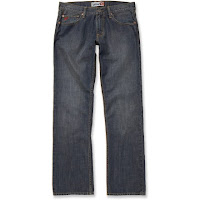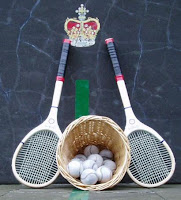Thursday, 17 December 2009
Filming: A Disaster Strikes
The actress we had employed for the scenes which we were going to film today, the happier flashback scenes in our video, has therefore accepted and agreed on rearranging filming to when she is free on her A2-Level timetable, which will be the first couple of weeks when we are back in College after the Christmas holiday period.
Friday, 11 December 2009
Ipswich Waterfront: Filming On-Location & Capturing Video with Final Cut Pro

Josh: "During the filming we have managed to execute we have been keen to produce a variety of camera shots and angles which serve to add both texture and characterisation to our video. For example we have played around with focus in some of our shots so that our main character (Chris K) is at first out of focus and then comes into it as the camera comes across him. We hope that this technique will produce the effect of portraying the character as someone who is not quite in tune with the world because he is in mourning. As well as that we have used several tracking and panning shots to show the character's journey, moreover his meandering struggle with his own existence."
Storyboards: Animatic
From my initial storyboard drawings, I extracted each shot and aligned them in a timeline with the music we are using, "5 Years Time" by Noah and the Whale, in order to create an "Animatic" version of our video in my own editing software on my PC at home - Microsoft Windows Movie Maker. Although I should have used Final Cut Pro, I decided that I didn't really need any expert or professional-looking effects or transitions on the Animatic version as it was only the rough draft of the final piece.
The purpose of the Animatic was to picture how each shot would look and how we could improve on the shots in order for both the music and our storyline to make sense.
If you have any prob;ems viewing the Animatic (below), follow this link to the video on my YouTube Channel: http://www.youtube.com/watch?v=URT-dQCtLNY
Thursday, 3 December 2009
Group Treatment: Cinematography - Chris Kenworthy (My Contribution)
For this task to be completed accurately I took into consideration various rules, codes and conventions used by professionals and expert cameramen in the media, when filming with any type of video camera system. These include the “Rule of Thirds”, the “180 degree line rule”, the “30 degree line rule”, “Handles”, “Match-On-Action” (continuity and flow of one shot into another), and “Framing”.
The “180 degree line rule” will apply greatly to the continuity and comfortability of the video from the audience’s point of view. If the man walks from the right to the left of the screen and the girl from the left to the right of the screen, in shots to follow this known movement should be retained, unless otherwise shown by the camera, where the camera tracks from one side to the other. Then, once you have explained how the two characters have been moving and how we as an audience have ‘crossed’ that ‘line’, as a cameraman you can then begin to develop shots with a different point of view of the characters. Otherwise, a bad mistake and confusion can often lead to audiences becoming less interested in your production and your mishap is considered to be a moviemaking error and a bad piece of camerawork.
I found the videos below on YouTube, and after using them for my Coursework project last year (Film Noir project) I decided to watch and use them again this year as they make the complicated rules easier to understand, use and follow.
For the first shot, the establishing shot, we had discussed a possible point-of-view shot of the Sun. This is personification of the Sun because we are seeing what the Sun sees, if it had a point of view of our world. So, I took this as a consideration, and as a result I have decided that the first shot could either be a High Angle Shot from the Sun’s point-of-view, or indeed a Low Angle Shot of the Sun, then from the Low Angle the camera tilts down to look at the street, but at the same time elevating the tripod using the Elevate/Depress tripod controls, so that when the street does come into view we see the street as if it is from the Sun’s point-of-view, or that of a CCTV camera (as in the CCTV camera joke video above), but looking to the right of the street.
The second shot is a continuation of the first, so Match-On-Action is increasingly important here. We see the man walking, “wandering aimlessly by the water’s edge” as Josh had put in our Synopsis. I was thinking of maybe a High Angle Shot looking down to the left of the street, the camera on the opposite side of the street this time, and focusing on the man as he walks from the right to the left of the screen, continuing his movements from the first, establishing shot. I was hoping that to cut down on the number of shots we actually use, we could make these two opening shots into one long one, so that we are not worried about the flow of the cuts, but if we do film and edit these as two shots then we must pay particular attention to the “180 degree line rule” and the continuity and flow of the transition between the two shots.
The third shot is of the man as he sits down by the water’s edge and dangles his legs over the edge of the promenade, his legs dangling above the water. We could have a Wide Shot of him as he walks to where he will sit down, the camera panning left to give him some “looking space” in the framing of the shot when he sits down. As he has approached and sat down next to the camera, the shot changes from a Wide Shot to a Medium Shot. Originally I thought we could have only the man in focus (Shallow Focus) then when he crouches to sit down we re-focus the shot so that both the foreground and the background are in focus.
When he sits down, the next shot is of his legs dangled over the edge and his reflection in the water below. Because I wanted to show his legs at the bottom of the frame, I think this shot will be better shot as a handheld shot, and have a focus pull from his legs to his reflection, ready for the next shot of the water where we see him and his girlfriend reflected in the water. She isn’t really there, and the reflection of her is just one of his memories which sets us up for the shot to follow.
To be creative, I thought the next shot of the water could be in the past, still with their reflections in the water, only this time it is a memory, not so much an illusion. I thought we could have the shot of his legs and her legs dangling over the edge, only they are both in different clothing to his present - in summer clothes, and as they get up and leave happily from the spot at which they were sitting, in the next shot (a Long Shot), hand-in-hand, the real man in the present time still sits there, and sees his memory as if he is a ghost in another world, invisible to others but not to us, watching as their relationship together (in his past) progresses to the video’s climax. I reckon we can add this effect to the video in Editing, and only involves superimposing, or overlaying one shot onto another.
We had discussed, as a group and with our lecturer Jon, that we could use the effect on our video called “Super 8mm” which was an old type of camera. I researched this on various websites, and found a video on YouTube which was the best example I could find of this video effect. It comprises handheld footage with the style of watching a reel of negatives produced from, for example, a family holiday in the 1960s, viewed in the 21st Century. We agreed that if we could in fact create this kind of effect for our video on our Editing software Final Cut Pro (on the Apple Macintosh computers in our Editing suite), as the camera equipment we are using records onto Mini-DV Tapes, then we would use this effect to our advantage on shots where we see the man’s flashbacks and memories on-screen.
Concluding on the fact that our narrative is about a man who now has a sad life, remembering (through the use of flashbacks) the good times he had with his girlfriend, I thought of using mostly Wide Shots or Medium Shots, with a couple of Dutch Tilts here and there where appropriate and maybe a couple of Extreme Close-ups on their hands joined in his flashback. I want to include a shot where we are focused on a metal fence (in the tennis courts?) with them arguing in the background but out of focus, then pulling off a Focus-Pull so that when she leaves him after their argument (in the tennis courts?), we focus on him, alone, and possibly crying (or not).
Wednesday, 2 December 2009
Group Treatment: Mise-En-Scene (MES) - Emily Swager
 Costumes:
Costumes:At the beginning of the Music Promotional Video the Girl will be wearing normal clothes (Jeans, shirt), and the Man will also be wearing normal clothes (Jeans, top). When the man is by himself he will be wearing a different top, Jeans and a jacket (he will have his hands in the jacket pockets to make him look more sad).
 wearing normal clothes again, but different clothing from the beginning of the video (Jeans, shirt and thin jacket) and the Man will be wearing normal clothes in a similar fashion (jeans and top and thin coat). Whenever he is alone he will be wearing the same clothing in all “lonely” scenes (Jeans top and jacket).
wearing normal clothes again, but different clothing from the beginning of the video (Jeans, shirt and thin jacket) and the Man will be wearing normal clothes in a similar fashion (jeans and top and thin coat). Whenever he is alone he will be wearing the same clothing in all “lonely” scenes (Jeans top and jacket).At the end of our video, the Girl will be wearing normal winter clothes (Jeans, top and a thicker coat) to show that it is getting colder. The Man will be wearing normal winter clothes (jeans, top and a thick coat), again to show that it is getting colder.
Whenever the two of them are together their costumes should be lighter, for instance they can be wearing white or brighter colours (like blue), to try to reflect the feeling of the summery weather. And, as time goes by, they wear darker, thicker clothing. For instance, the Man could start with a normal blue shirt, then as the song progresses he wears navy blue colours.
Whenever the Man is by himself he will be wearing neutral colours, so a neutral jacket colour like muddy grass green, and his shirt can be a black (the same goes for his jeans) to try and show that he is mourning.
 Props:
Props:Beginning of the pop promo – A bench (when the man is alone) but the bench will already be at the docks.
Ending – We need a jar that looks like an urn, also we need ashes, which we will get from Josh’s fireplace.
Lighting:
Whenever the two are together it will be natural light to make it seem happier. And whenever the man is by himself we should try and use low-key lighting to make things moodier or we can add more shade to make it look darker.
Tuesday, 1 December 2009
Group Treatment: Editing - Josh Payne
Editing: Our narrative consists of two time scales so it will be important to make it clear which scale we are in by possibly using visually arresting cuts such as swipe edits when we switch time scales. Apart from those moments I intend to stick mostly to conventional edits although I may employ a couple of jump cuts during the argument to create an atmosphere of chaotic friction. I may also use a couple of graphic matches during the rapid cuts of the choruses in order to show the breaking symmetry of the periods.
In addition we have also discussed using a "Super 8mm" type of visual colour for the flashbacks as it creates a sense of hyper reality as well as harking back to a time in the past. It will also hopefully further distinguish between the different time scales keeping the audience abreast of what is happening in order to avoid confusion. It is also important to point out that editing can play a more significant role in this project than in our film noir project as cuts are often more obvious and stylised in pop promos.
Josh's Development of Ideas:
As I have already mentioned this you may have noticed that as a group we have decided to change our song from 5 Years Time to Blue Skies by the same band, Noah and the Whale. Just recently, in a discussion with Emily (another group discussion) we came to the conclusion that we were, in fact, using the original song, "5 Years Time". We did this because our ideas for the original song became more about grief after joy rather than the sadness of a break-up which is the primary theme of the new song "Blue Skies". Emily was particularly keen on bringing the theme of loss and the grief which follows, into our promo and Josh and I also became passionate about the idea. We briefly considered employing these themes in the 5 Years Time song and making the promo ironic compared to the song.
Our decision to switch songs was further influenced when we played the song for the rest of the group and pitched our idea. The overriding feeling seemed to be that they liked the idea but felt that the song wasn't appropriate for our story line.
Furthermore after discussing story lines we came to the conclusion that the promo will feature two characters, a man and woman. I agreed to play the man, following my highly acclaimed performance in our film noir project, whilst the girl will be played by our mutual friend Emily Halls. As an added point we have decided to film the scenes involving both characters from the point of view of the man in a similar style to the channel 4 sitcom Peep Show.
Josh's Individual Ideas
Josh sketched out a few individual ideas for the promo which we as a group have incorporated, however some of his individual ideas were rejected probably understandably.
Josh's Blog URL: http://snc-a2media09-jpayne.blogspot.com/
Emily's Blog URL: http://snc-a2media09-eswager.blogspot.com/.





